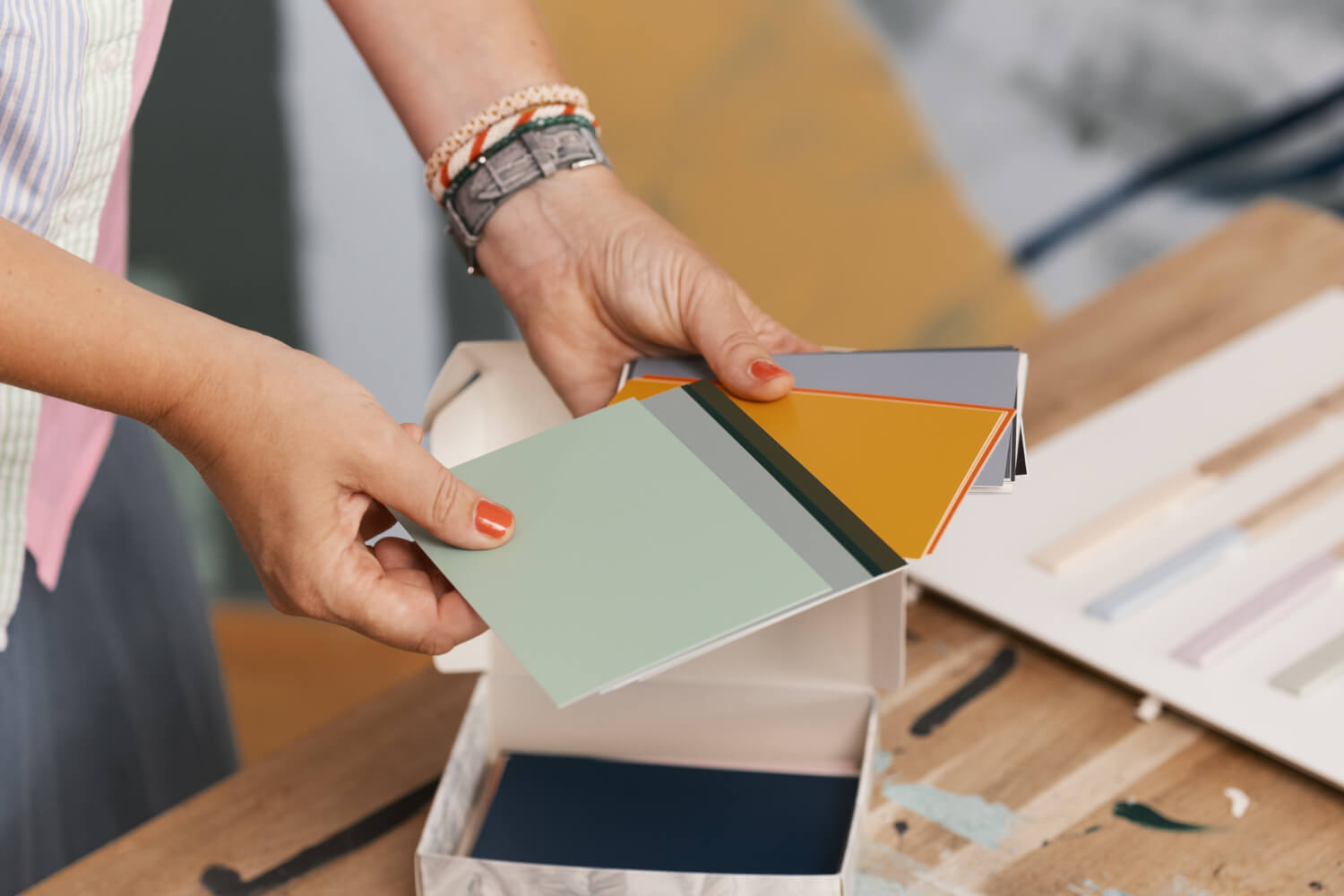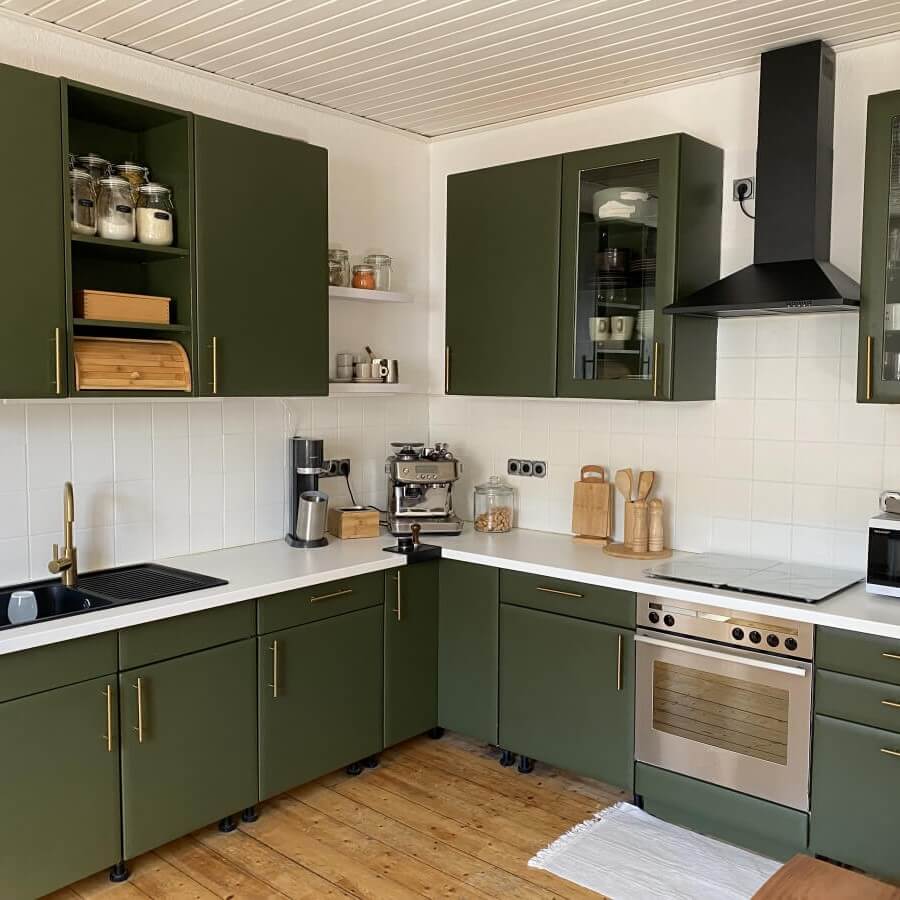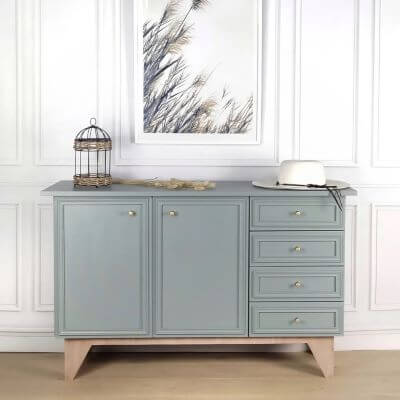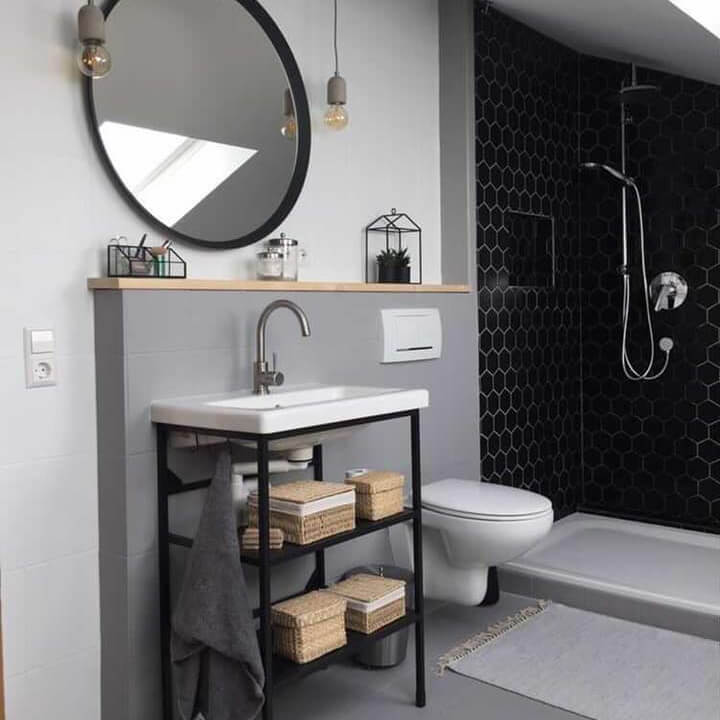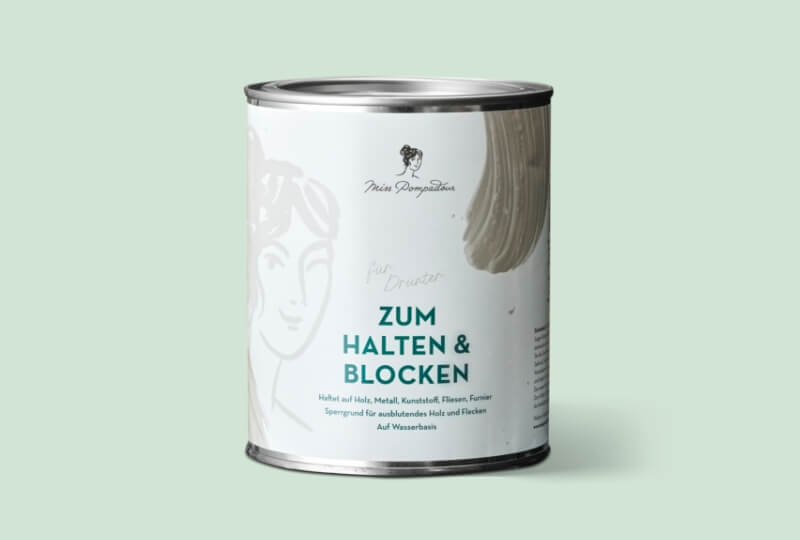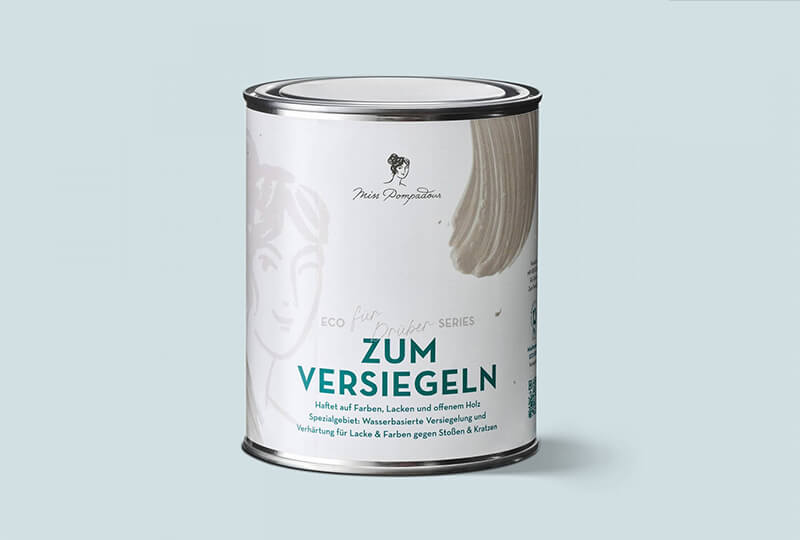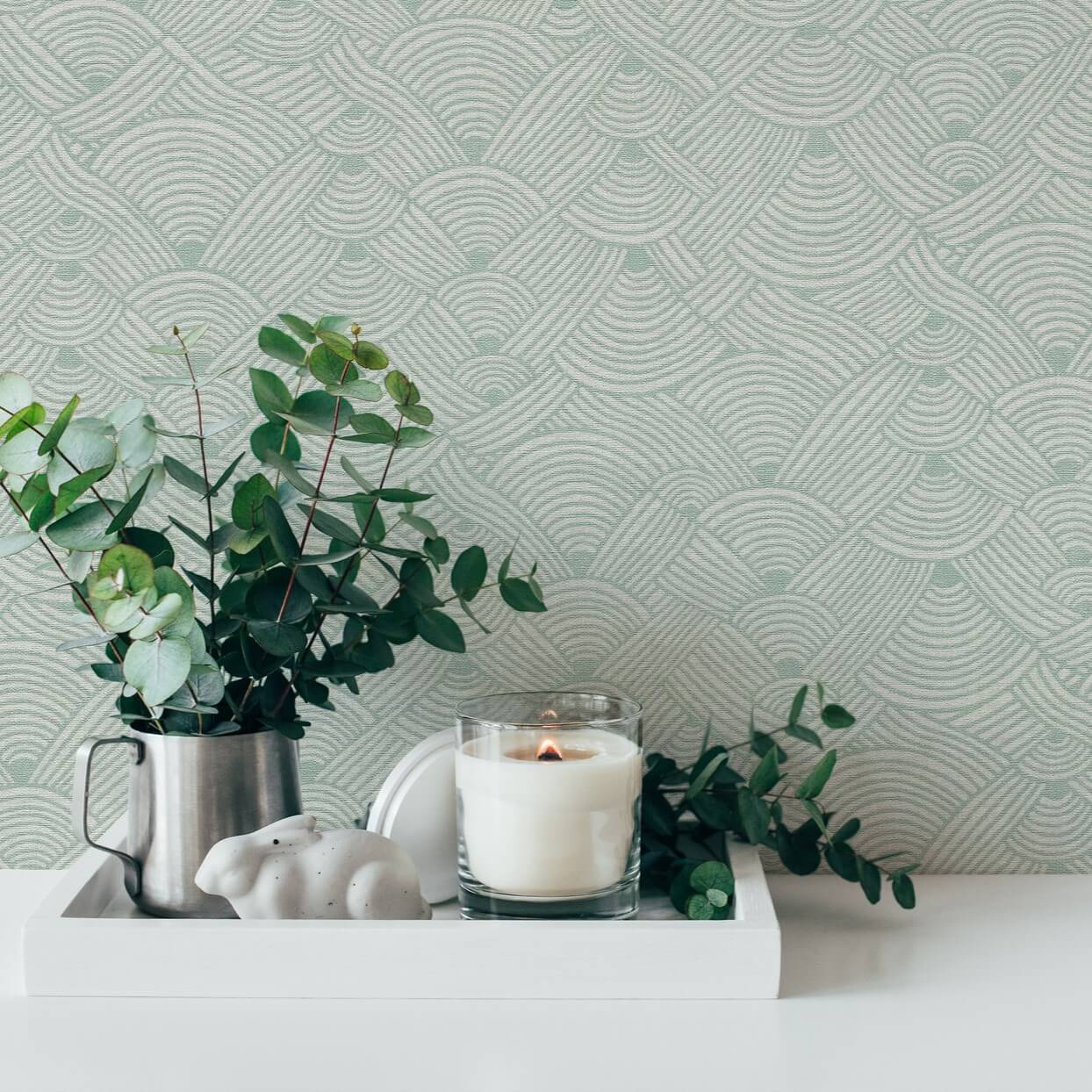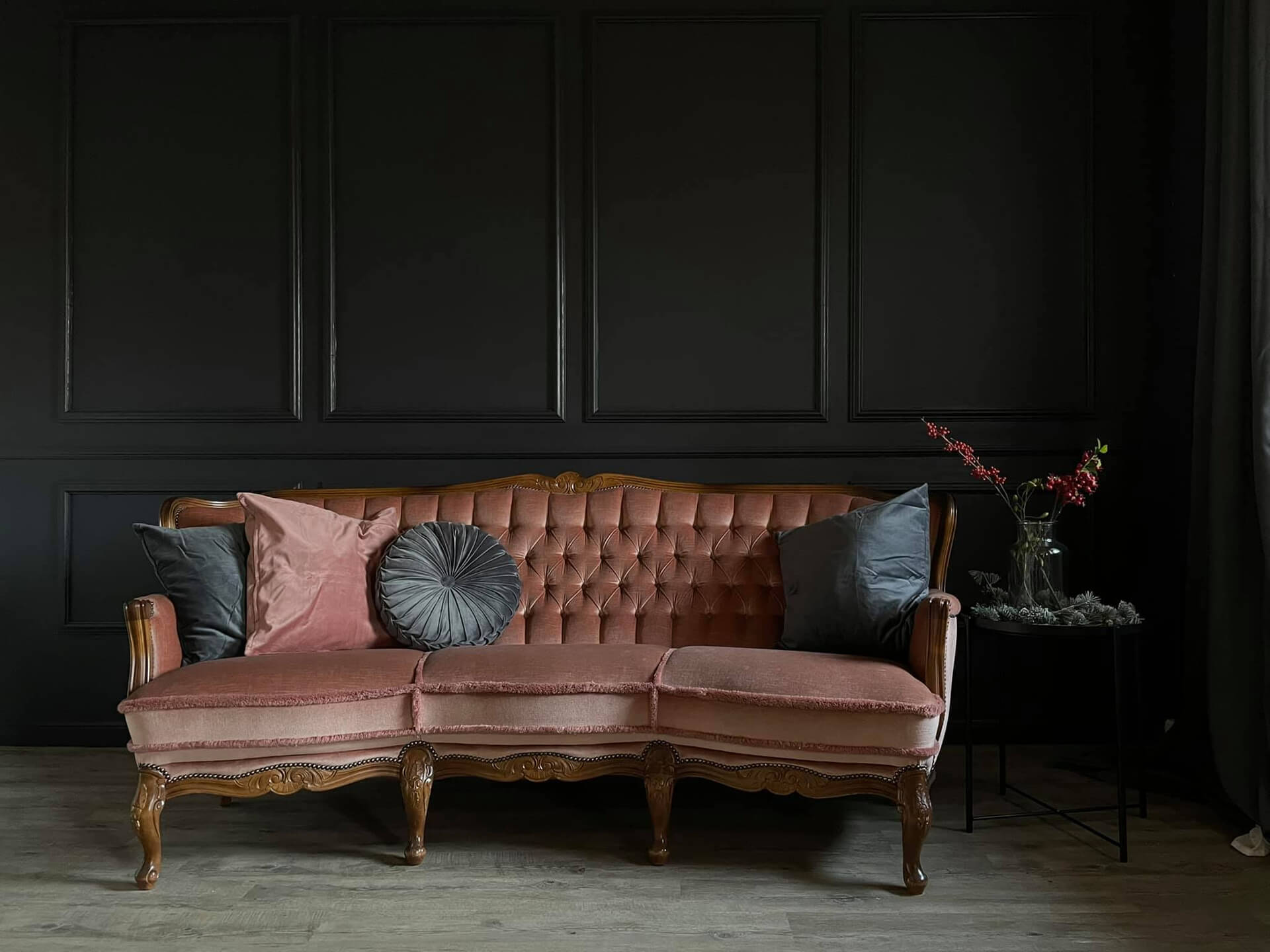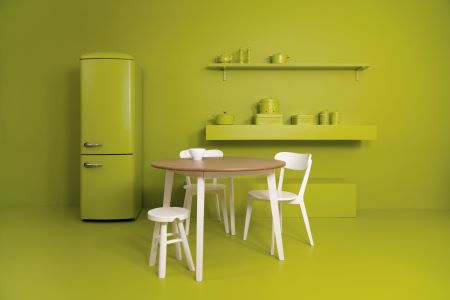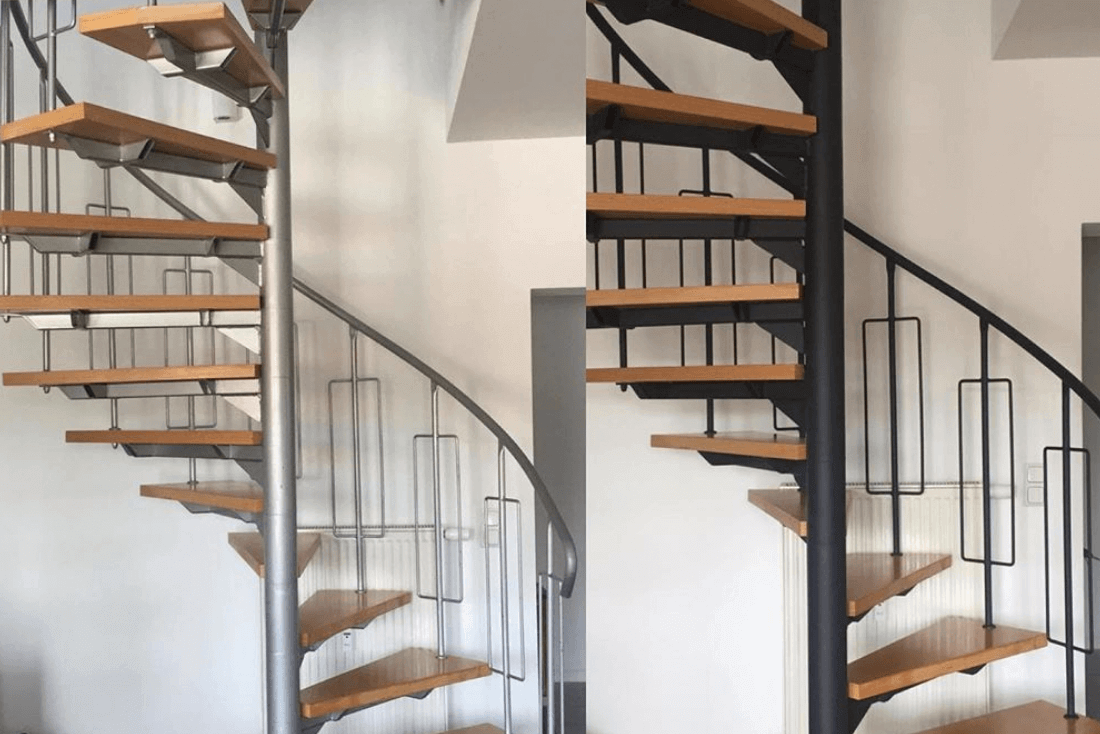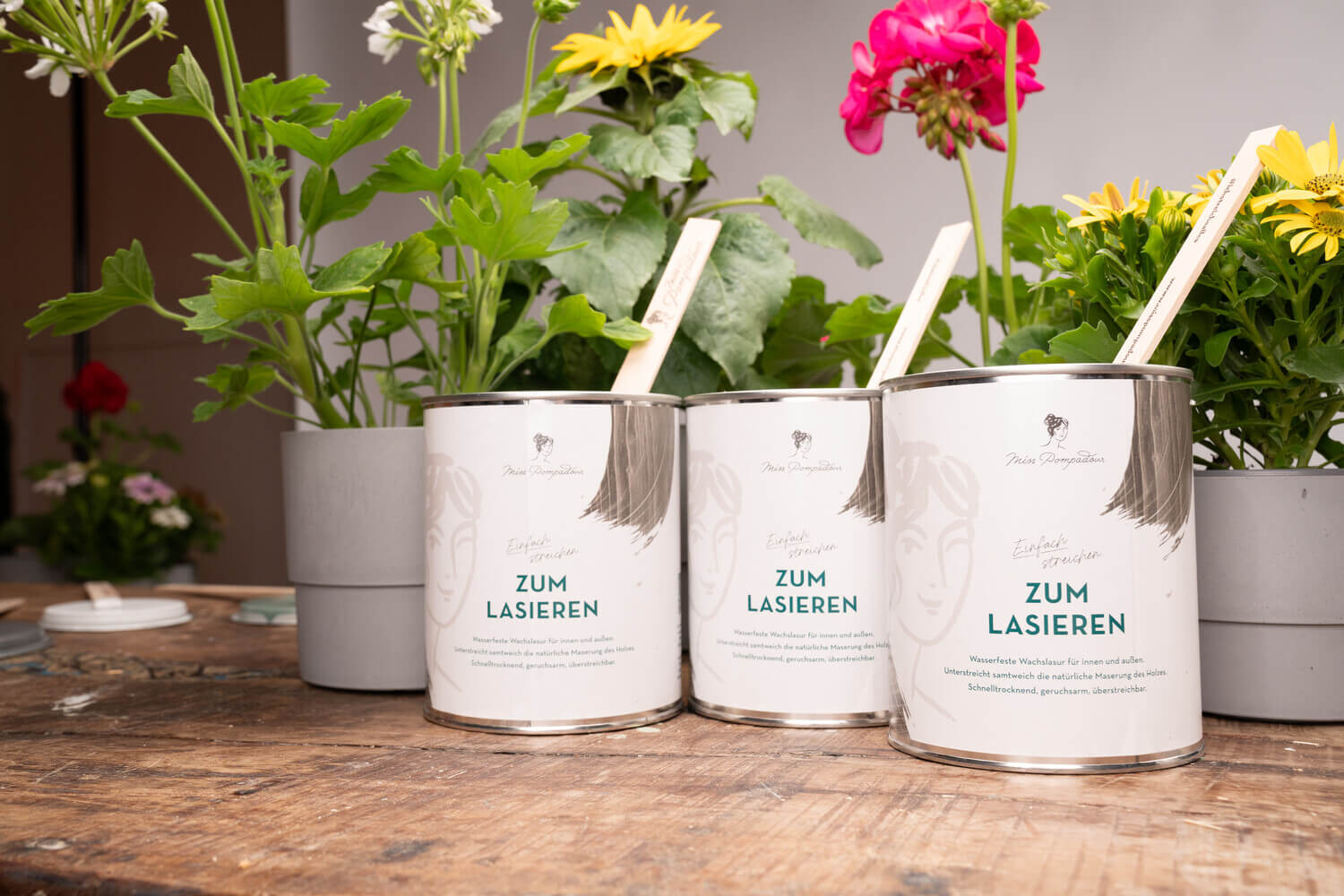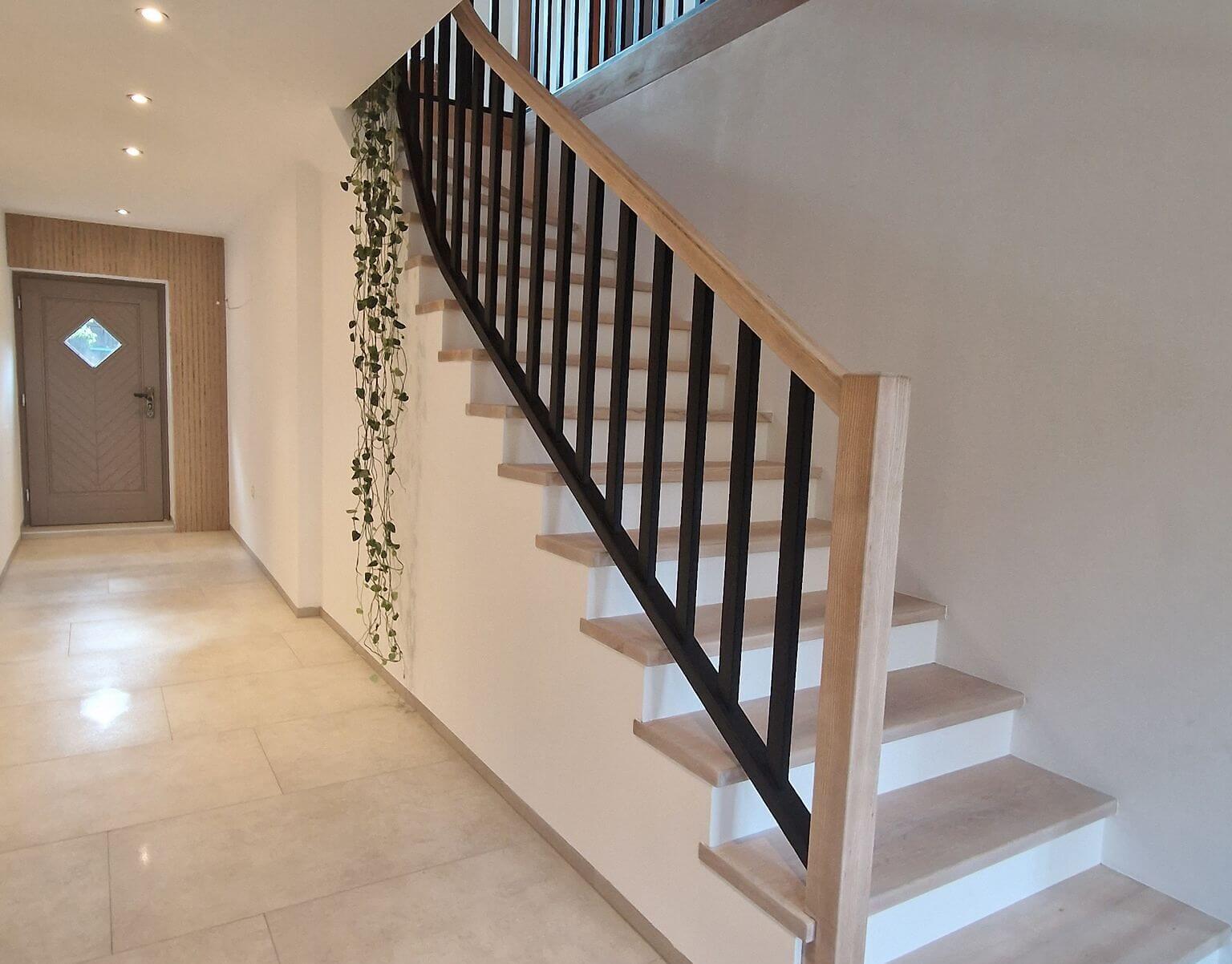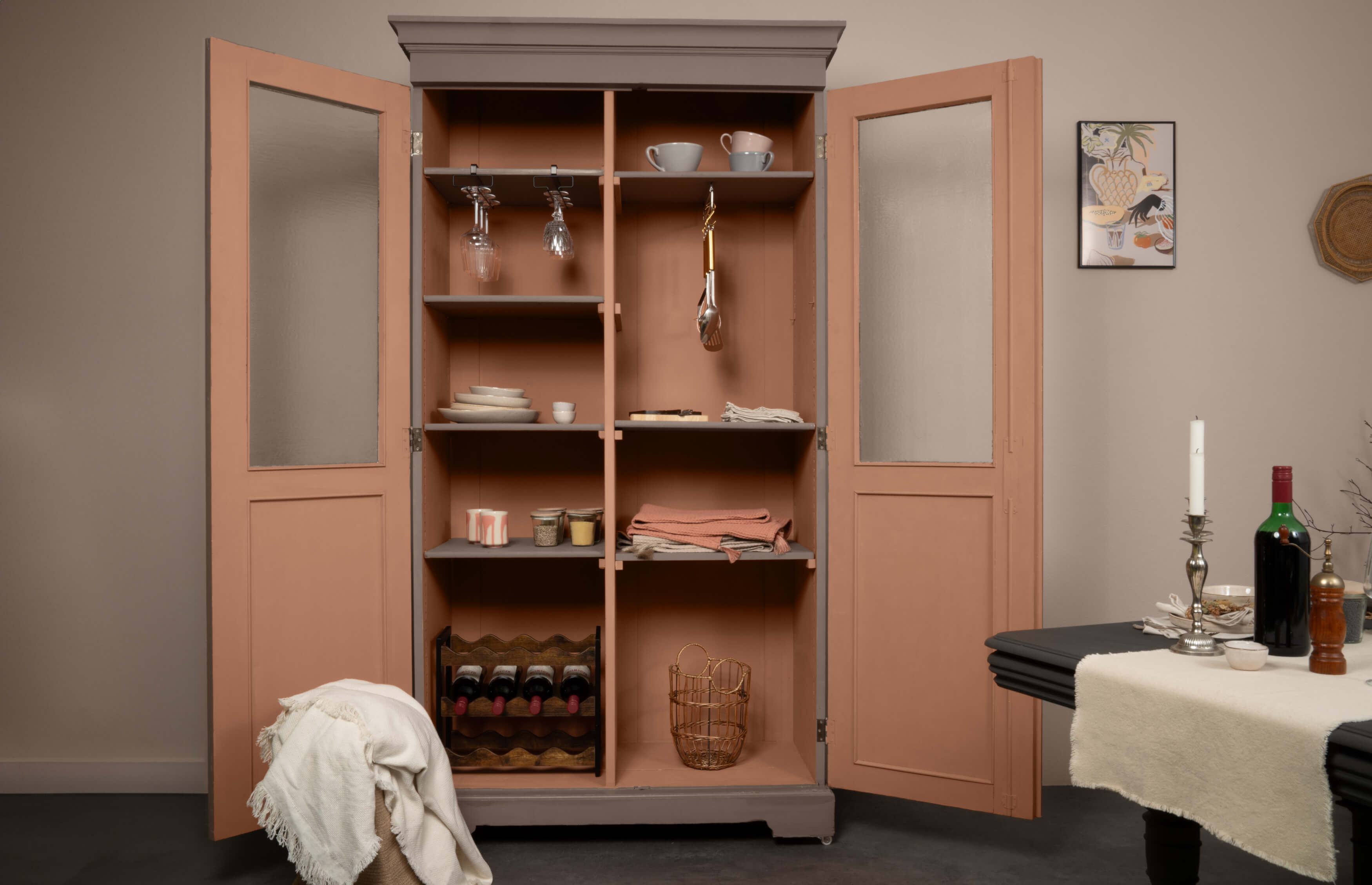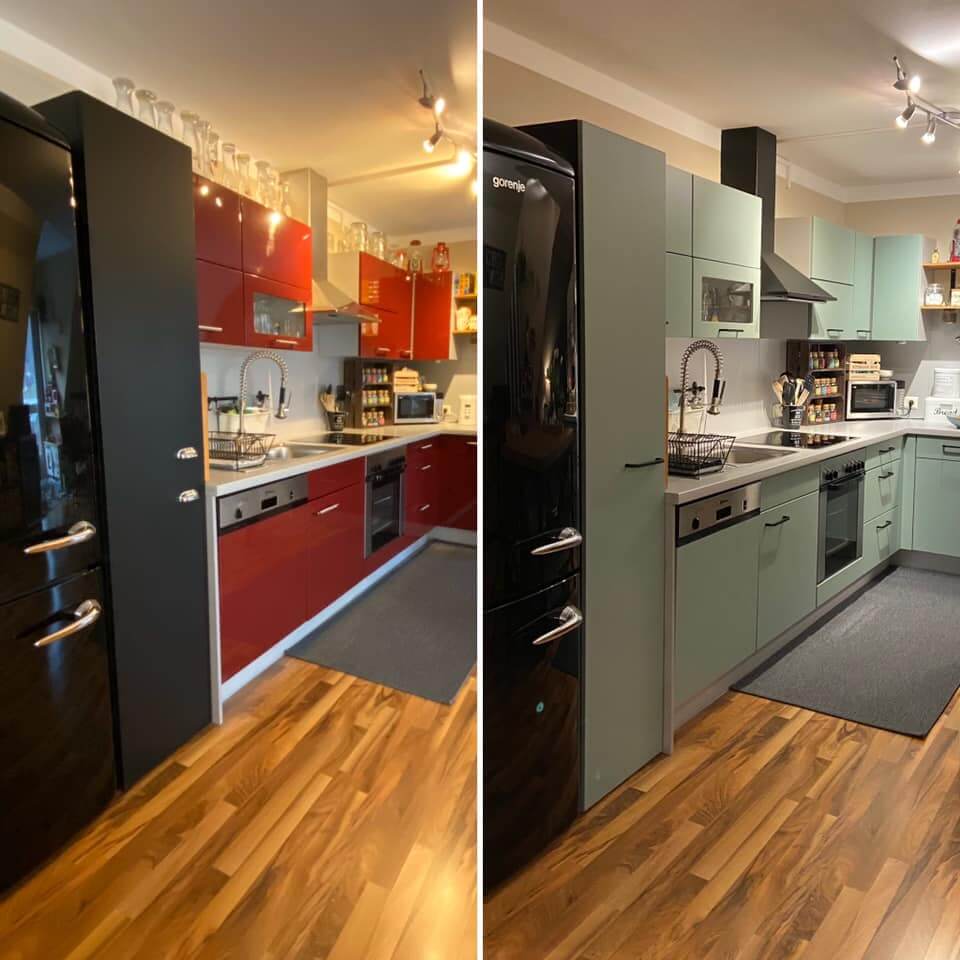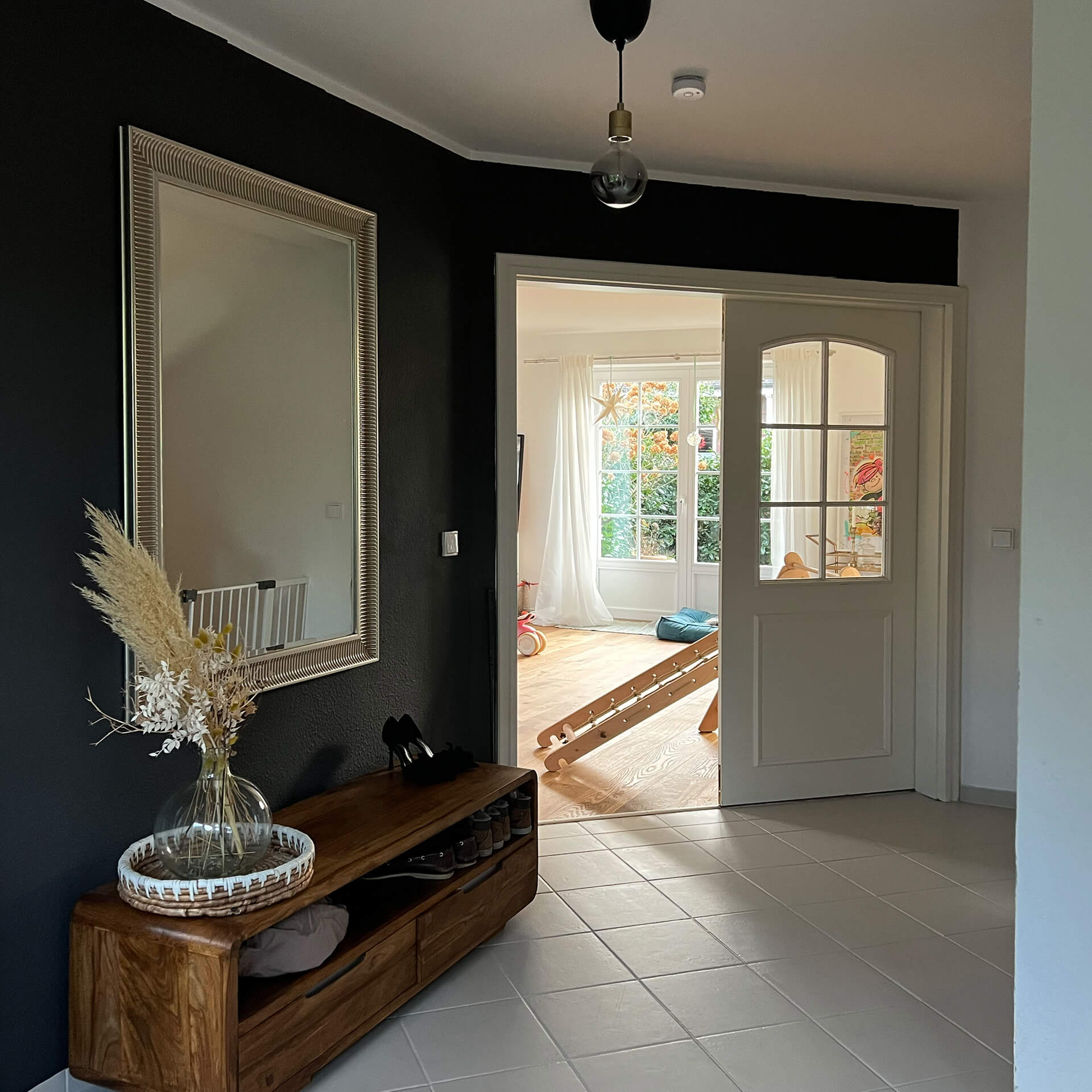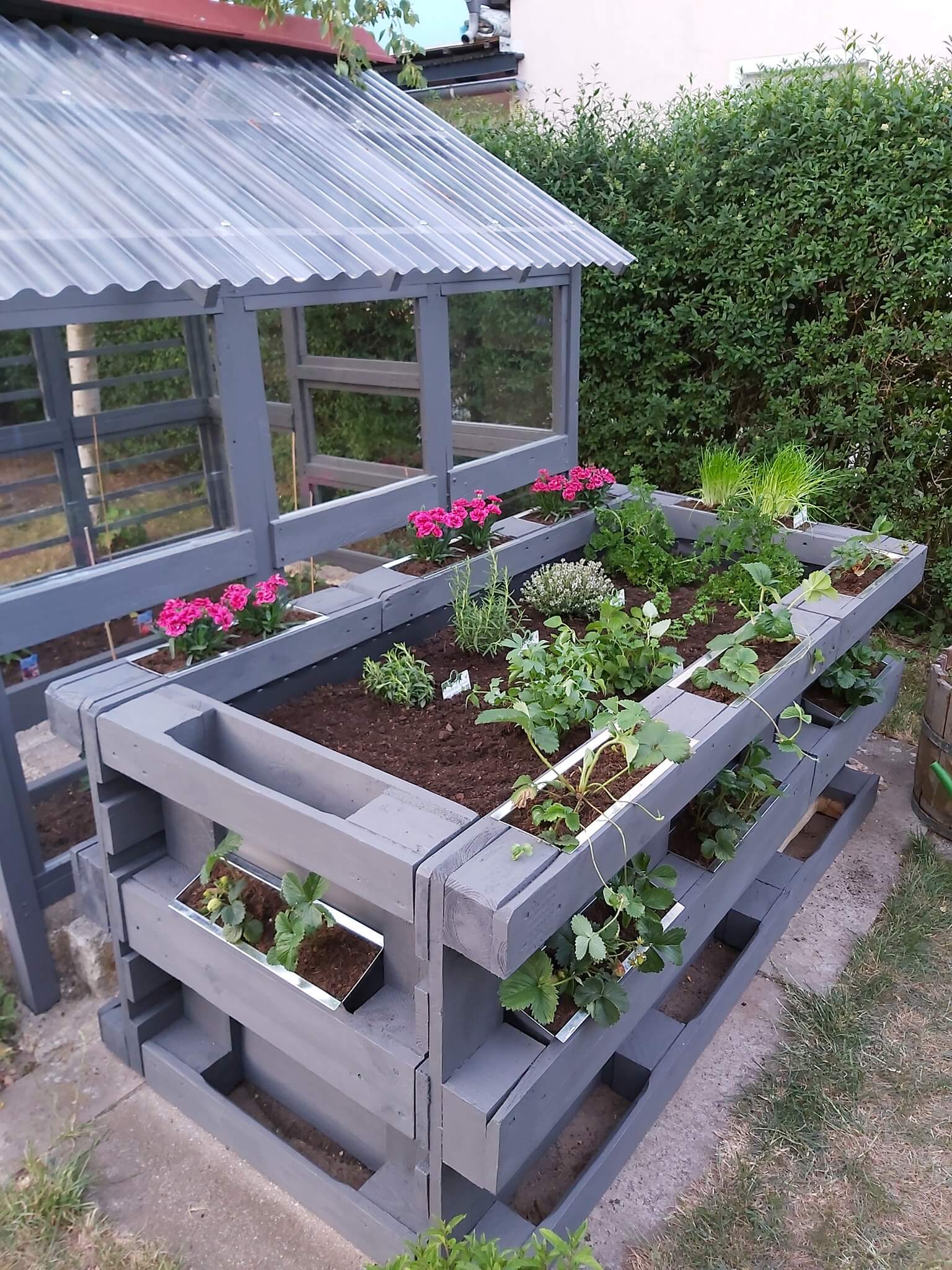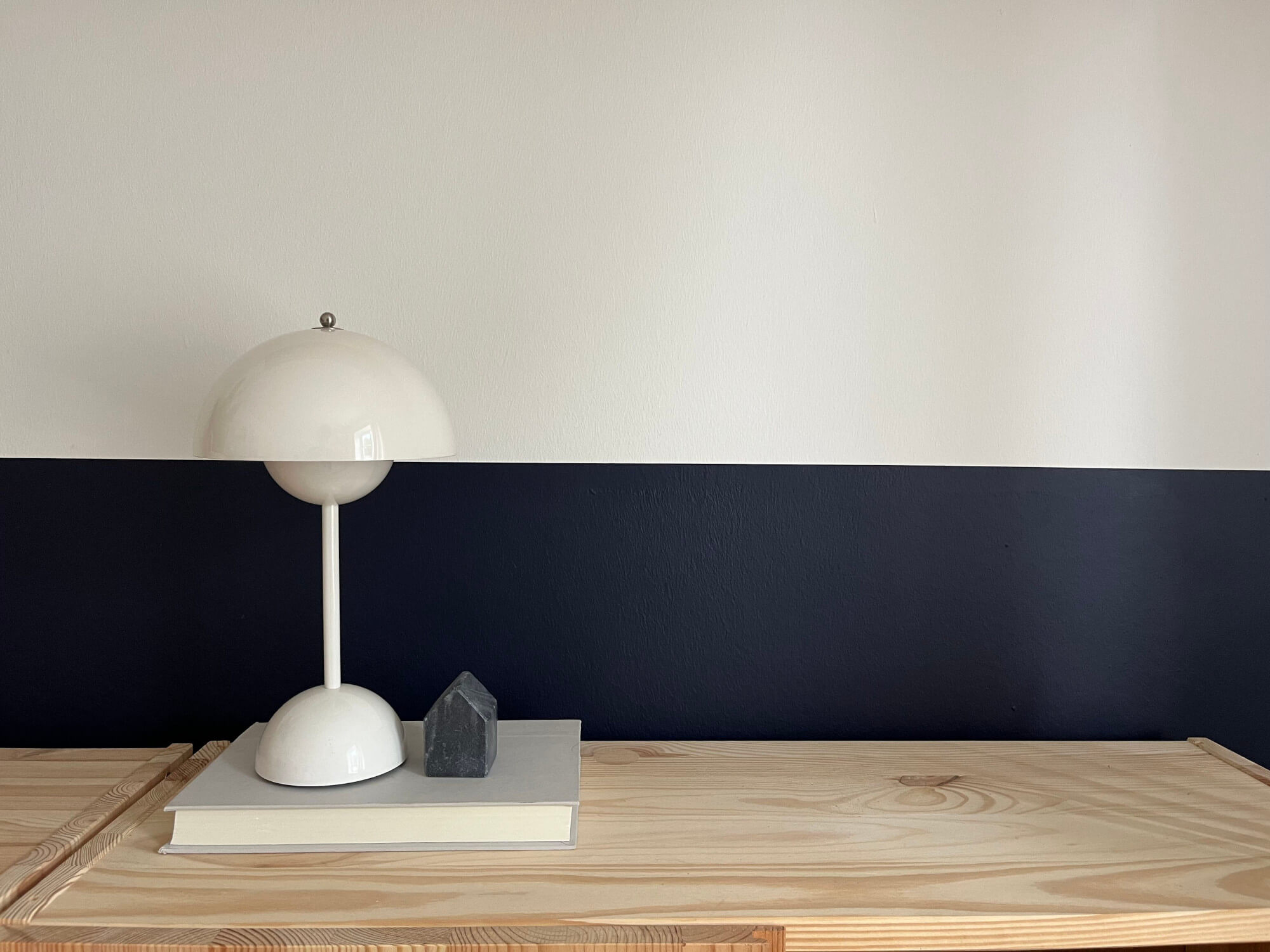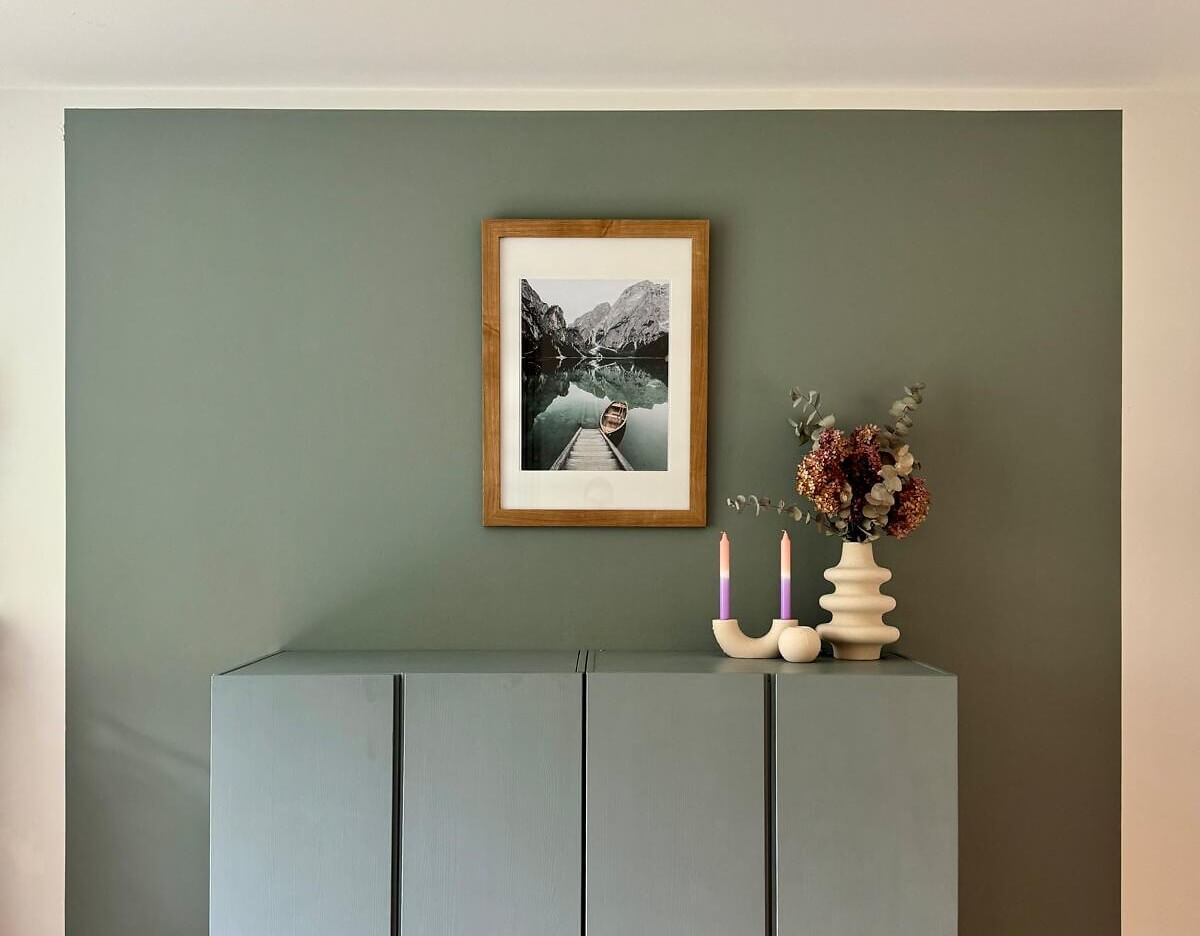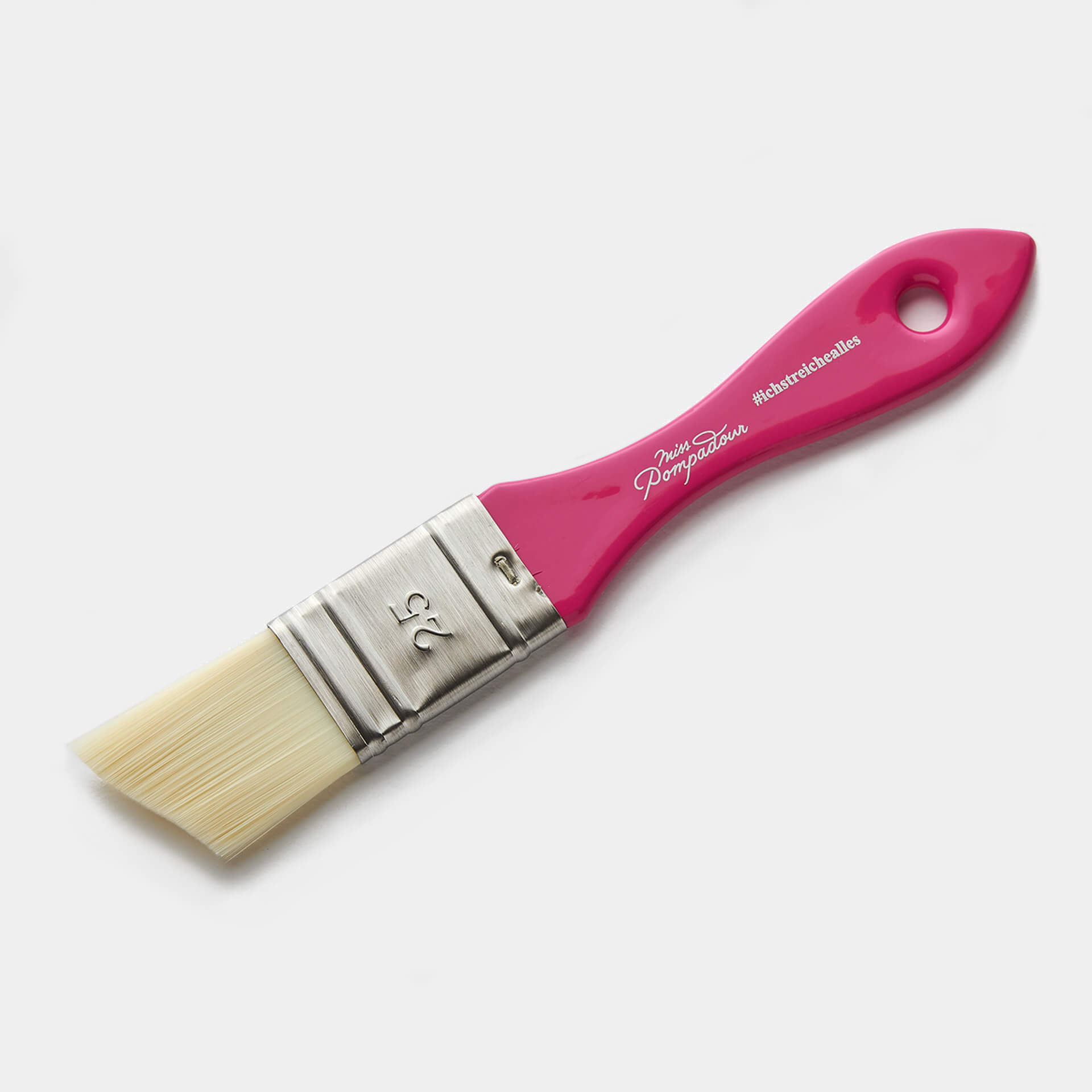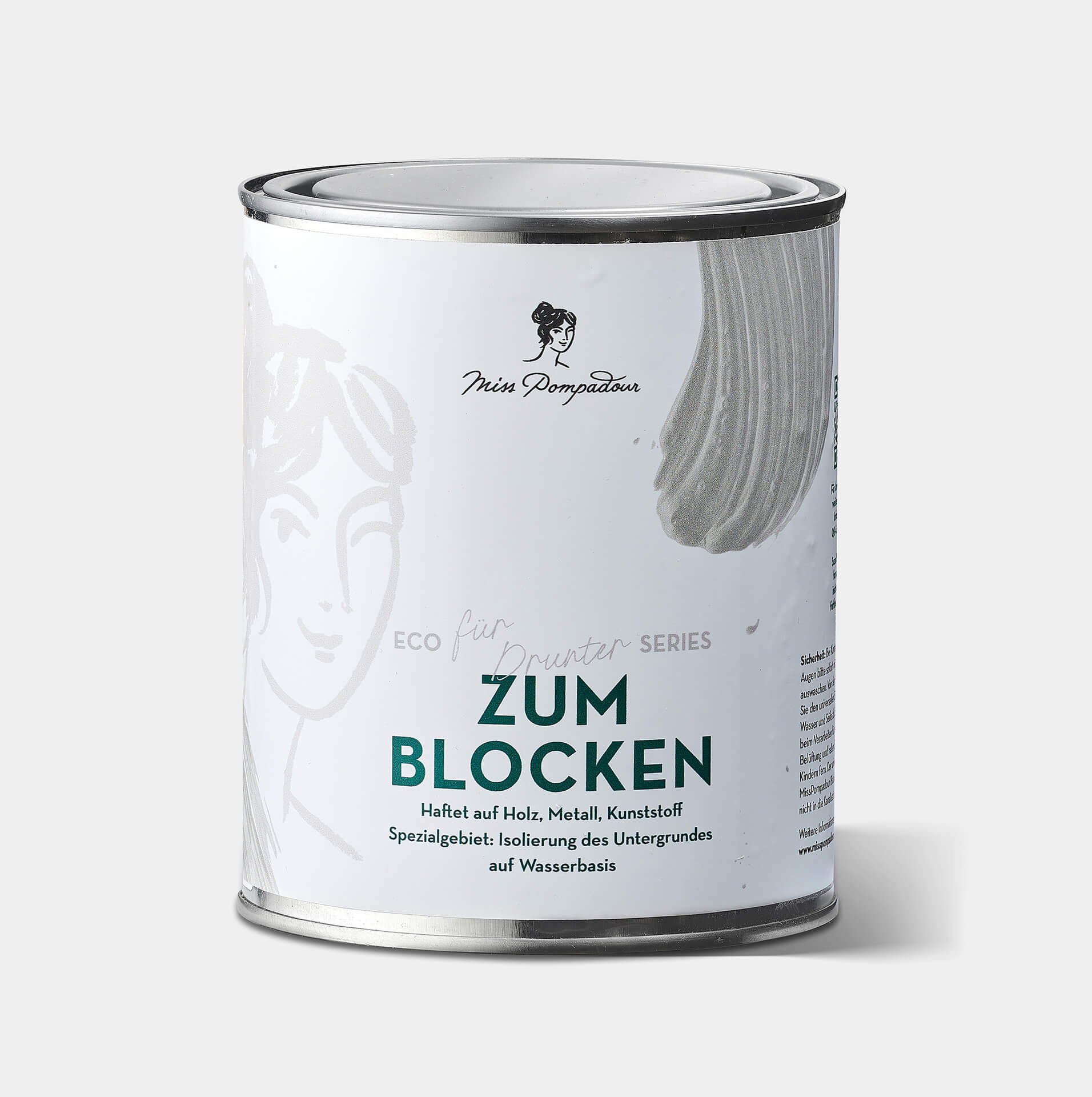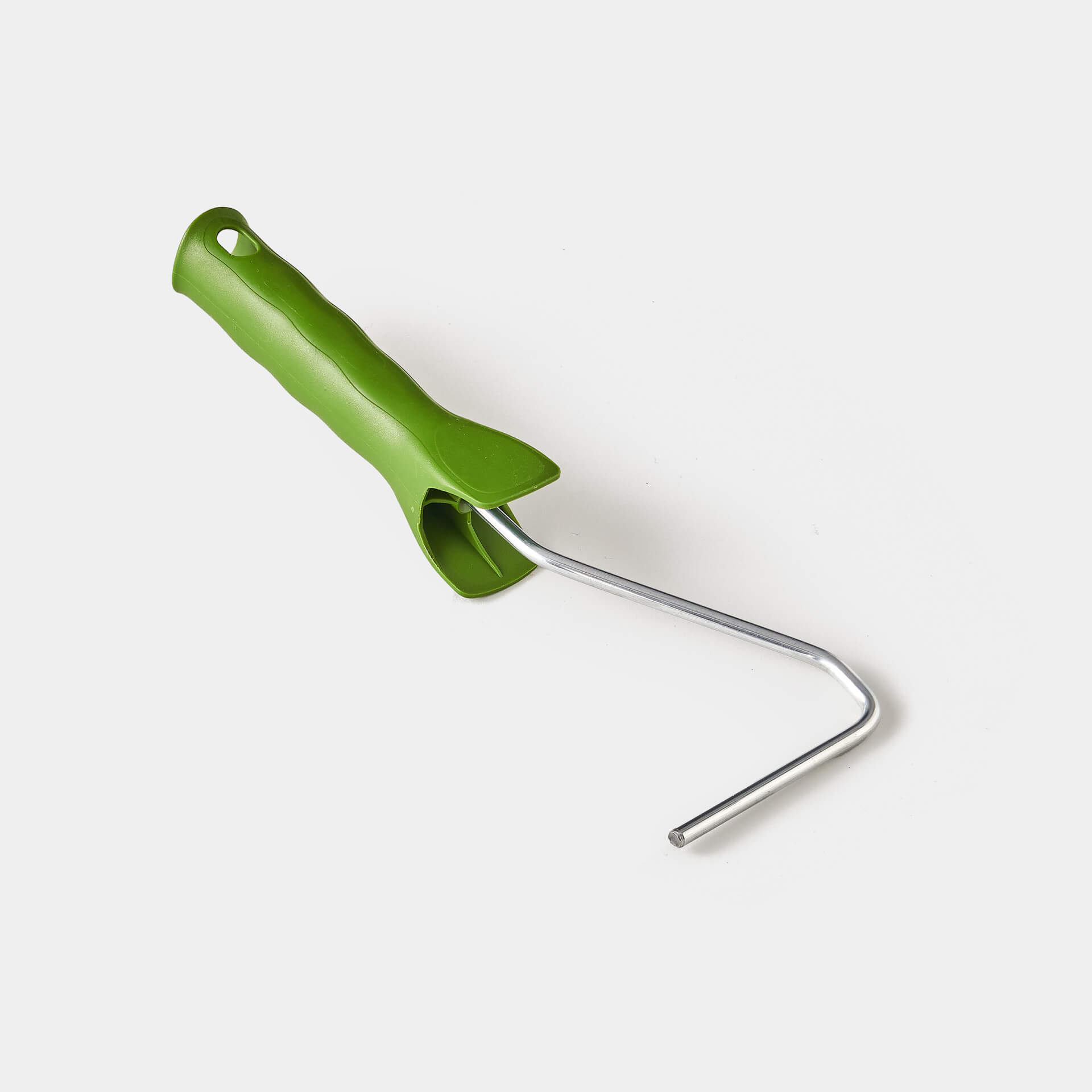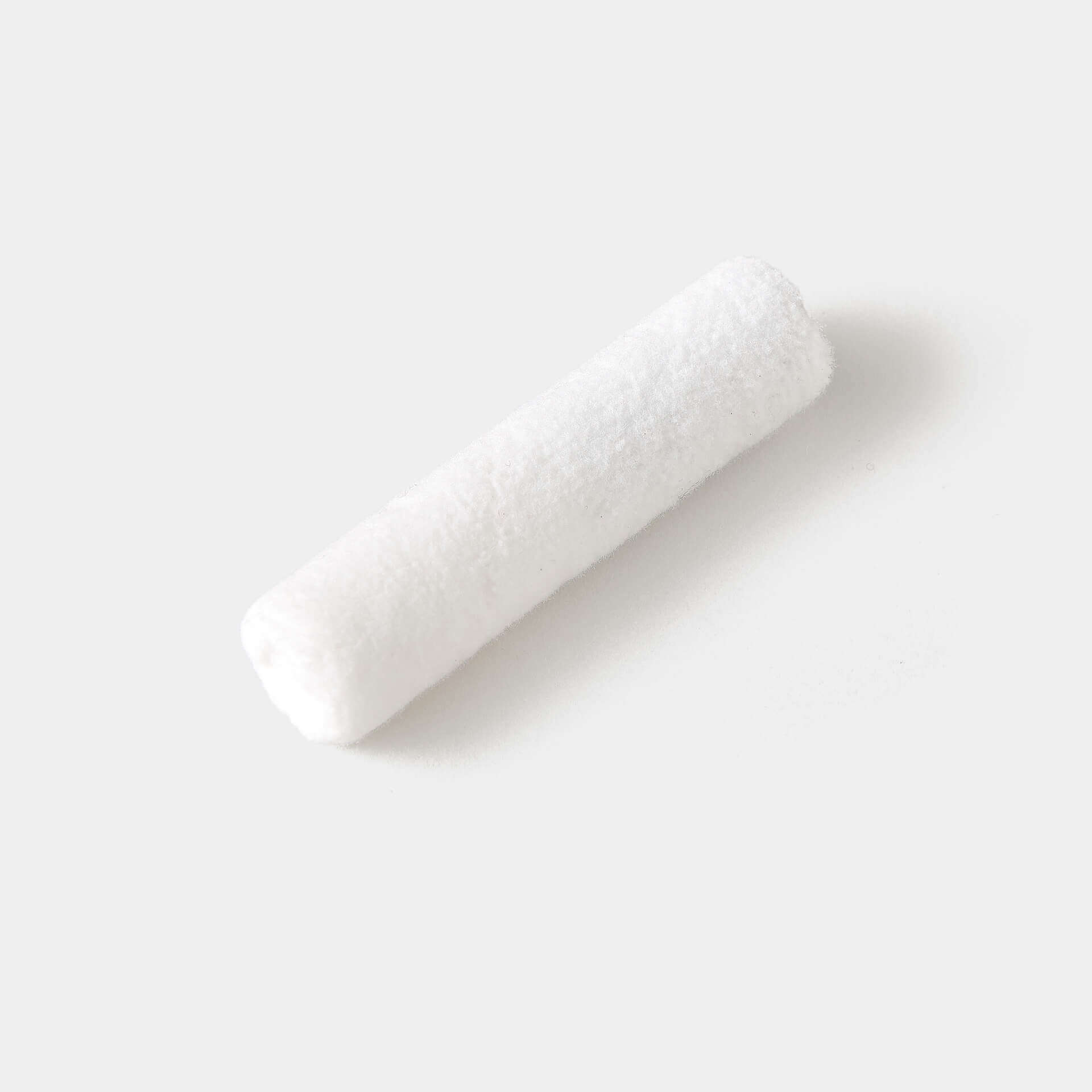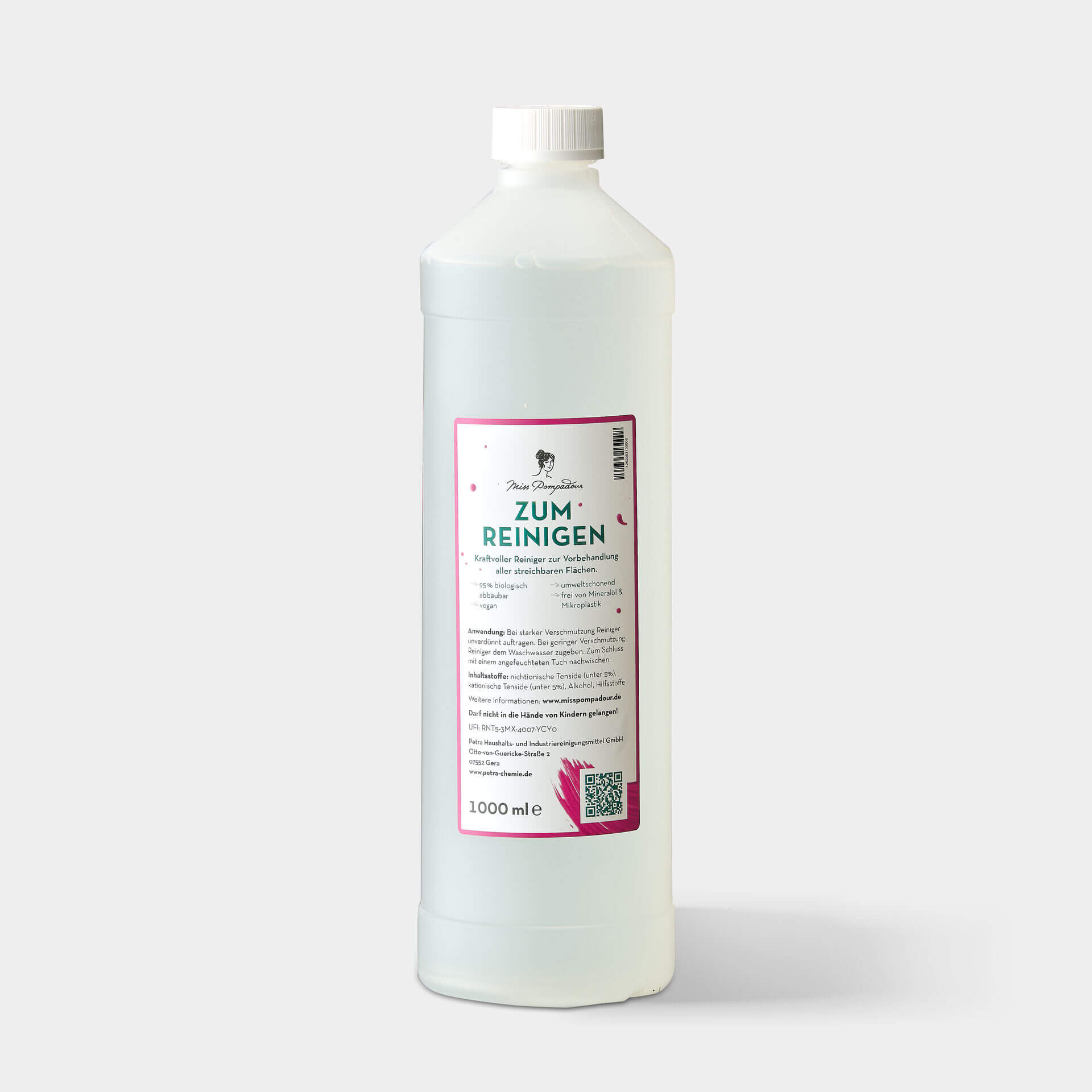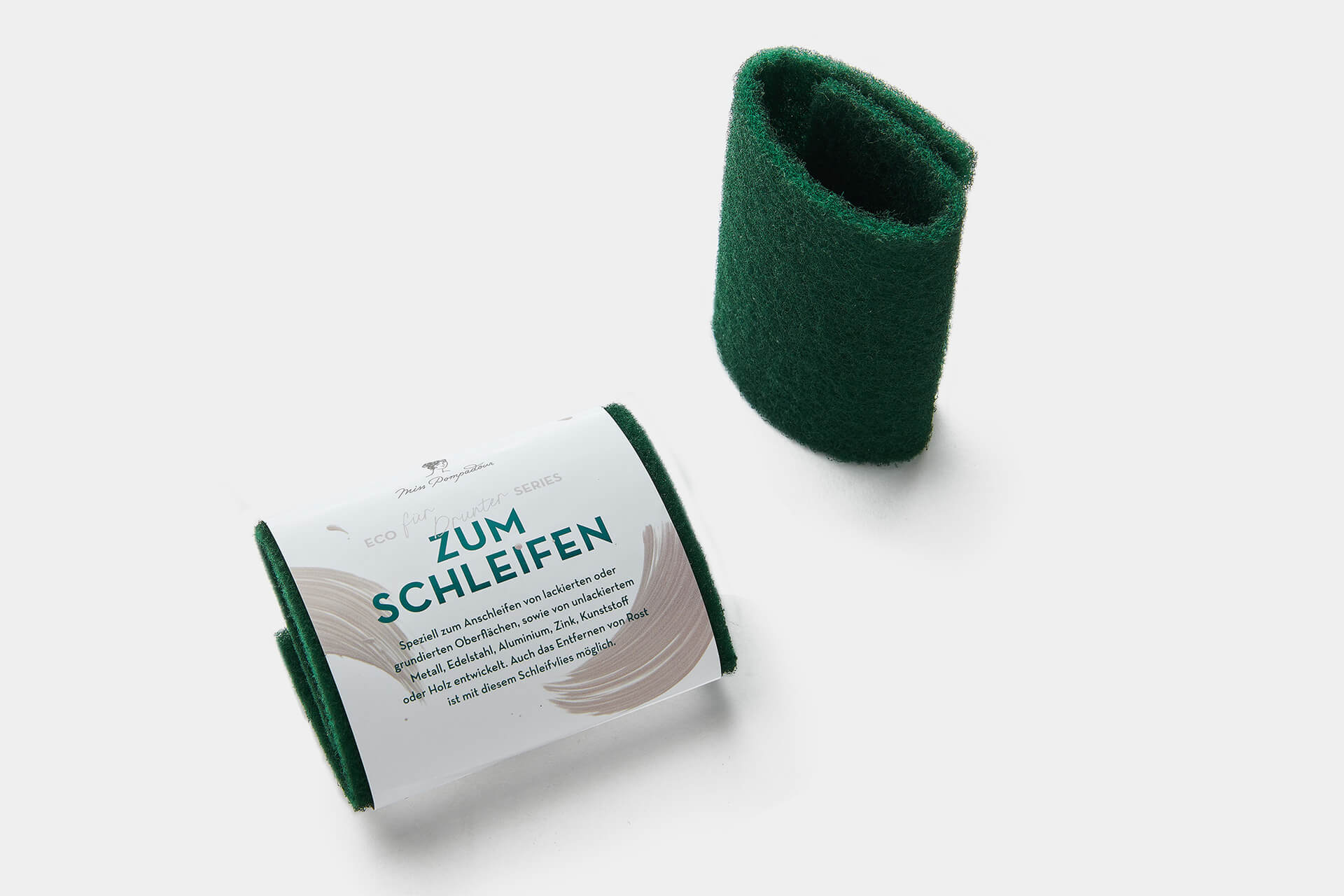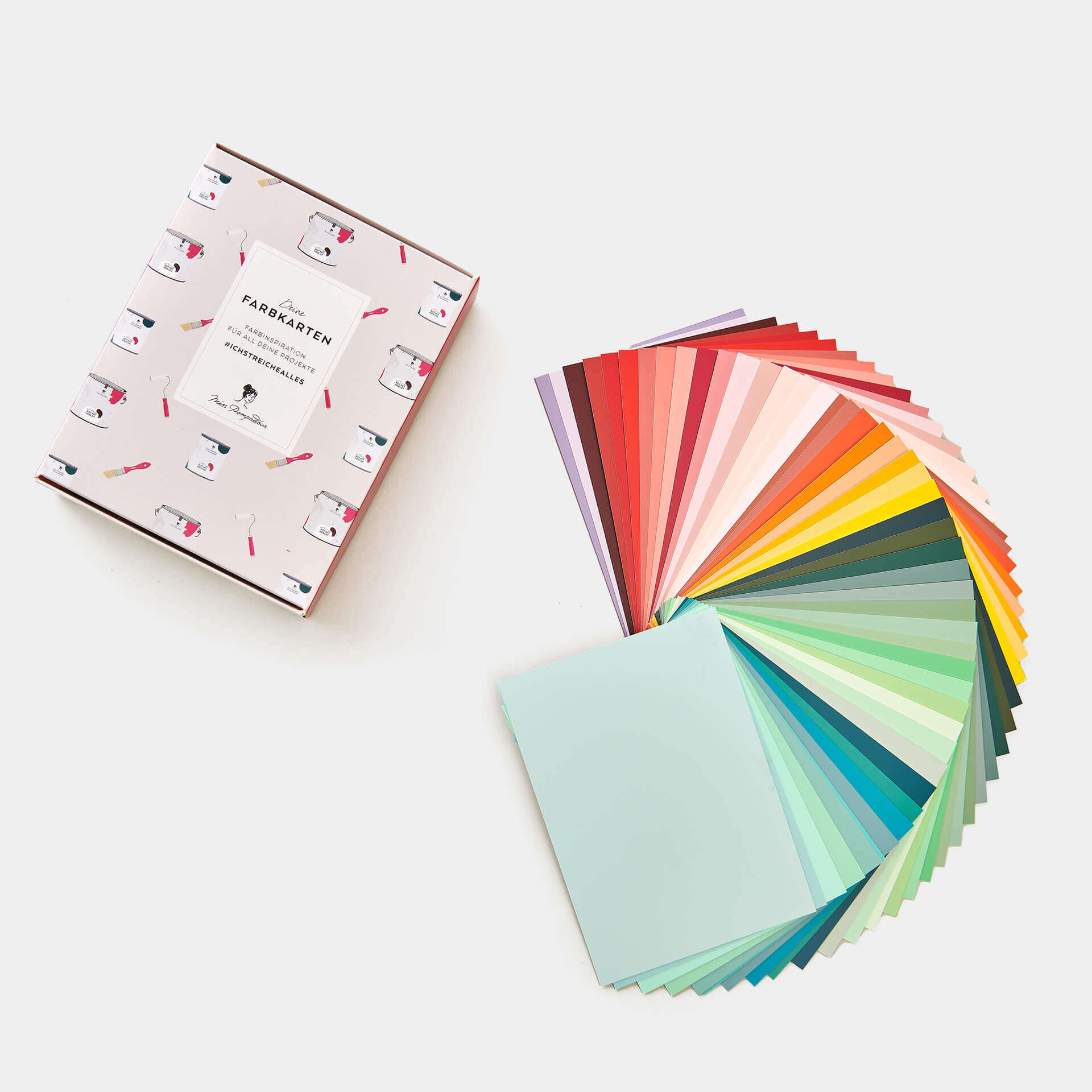Table of contents
1. What metal objects can I paint?
2. Ideas from the MissPompadour painting community
3. Preparation: How to choose the right paint for your project
4. Painting metal professionally: Instructions from MissPompadour
5. FAQ: Frequently asked questions
6. These are the accessories you need for metal painting
Which metal objects can I paint?
Basically, you can paint all metal objects. Decorations, railings, doors, fridges, window frames - there is hardly anything metallic that our customers have not already painted with our colours. MissPompadour has a solution for almost every project. You can find more detailed information in this article here.
Ideas from the MissPompadour painting community
Why should you paint metal? Because it's a great way to match almost everything in your home and outside to your style. Your black banister doesn't match the freshly painted stairs? The flowerpot on the windowsill doesn't match the new sofa? The radiator urgently needs a new coat of paint and the handles on your chest of drawers should match the new colour? No problem! Take a look at what our customers have already painted and let yourself be inspired!
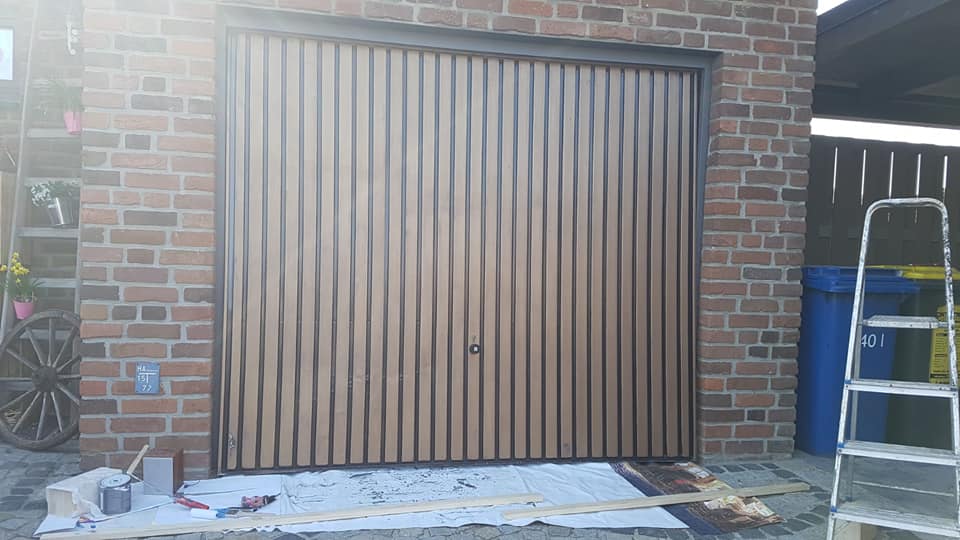
Before
- The garage door was getting on in years and was in desperate need of a fresh coat of paint.
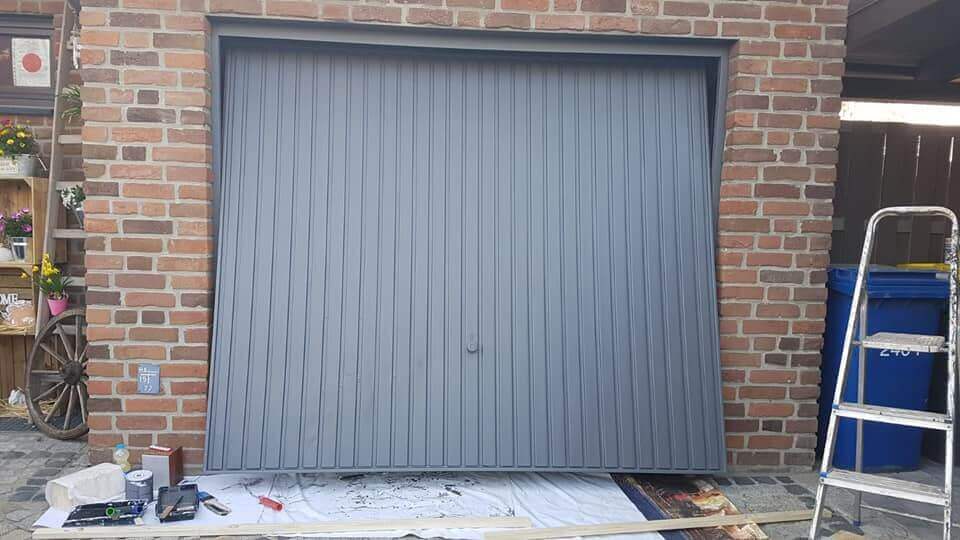
After
- The painting makes the gate look fresh again. The old protective metal paint did not have to be sanded off.
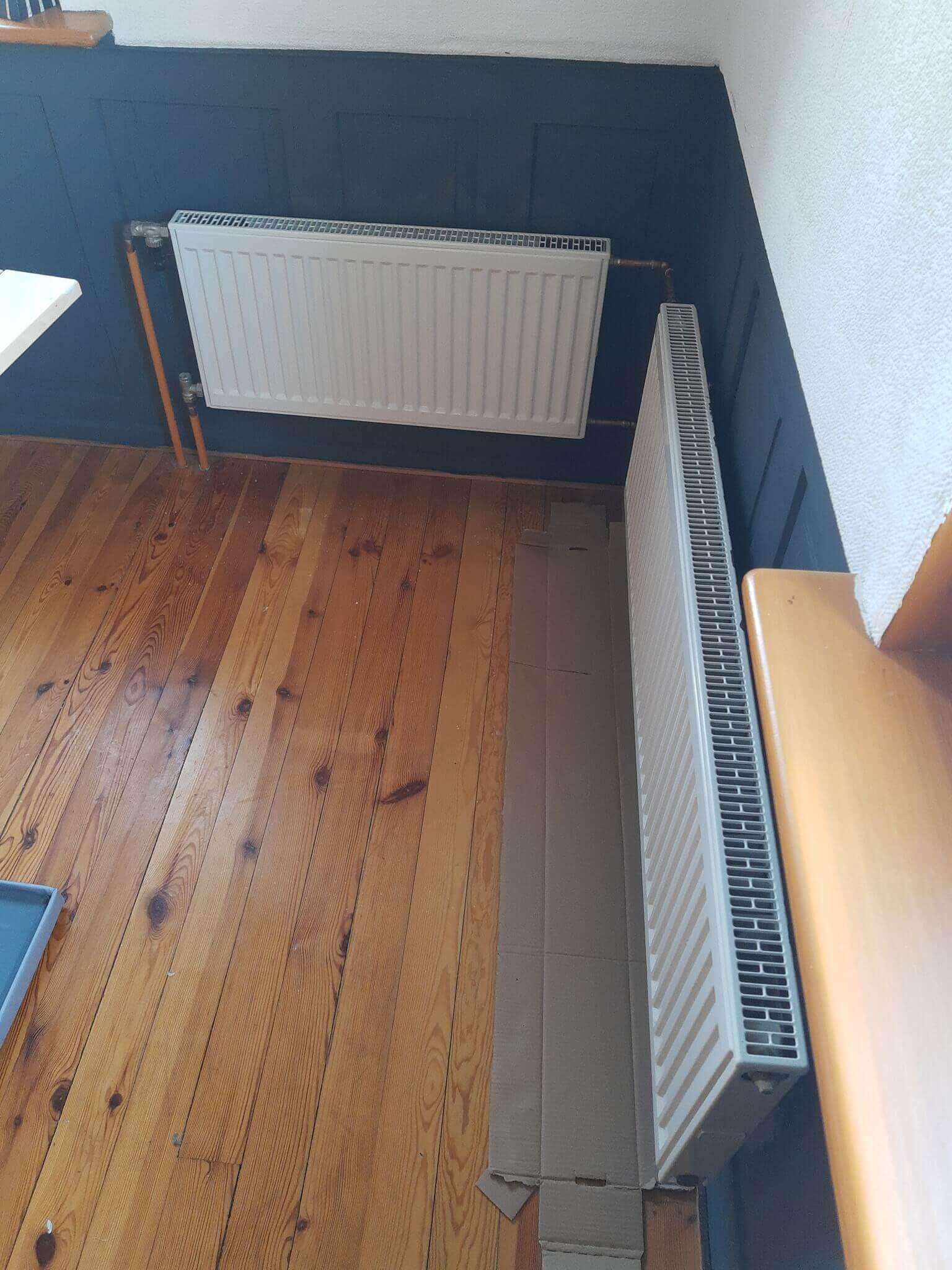
Before
- In front of the paneled wall, these white radiators were simply disturbing. They were far too intrusive.
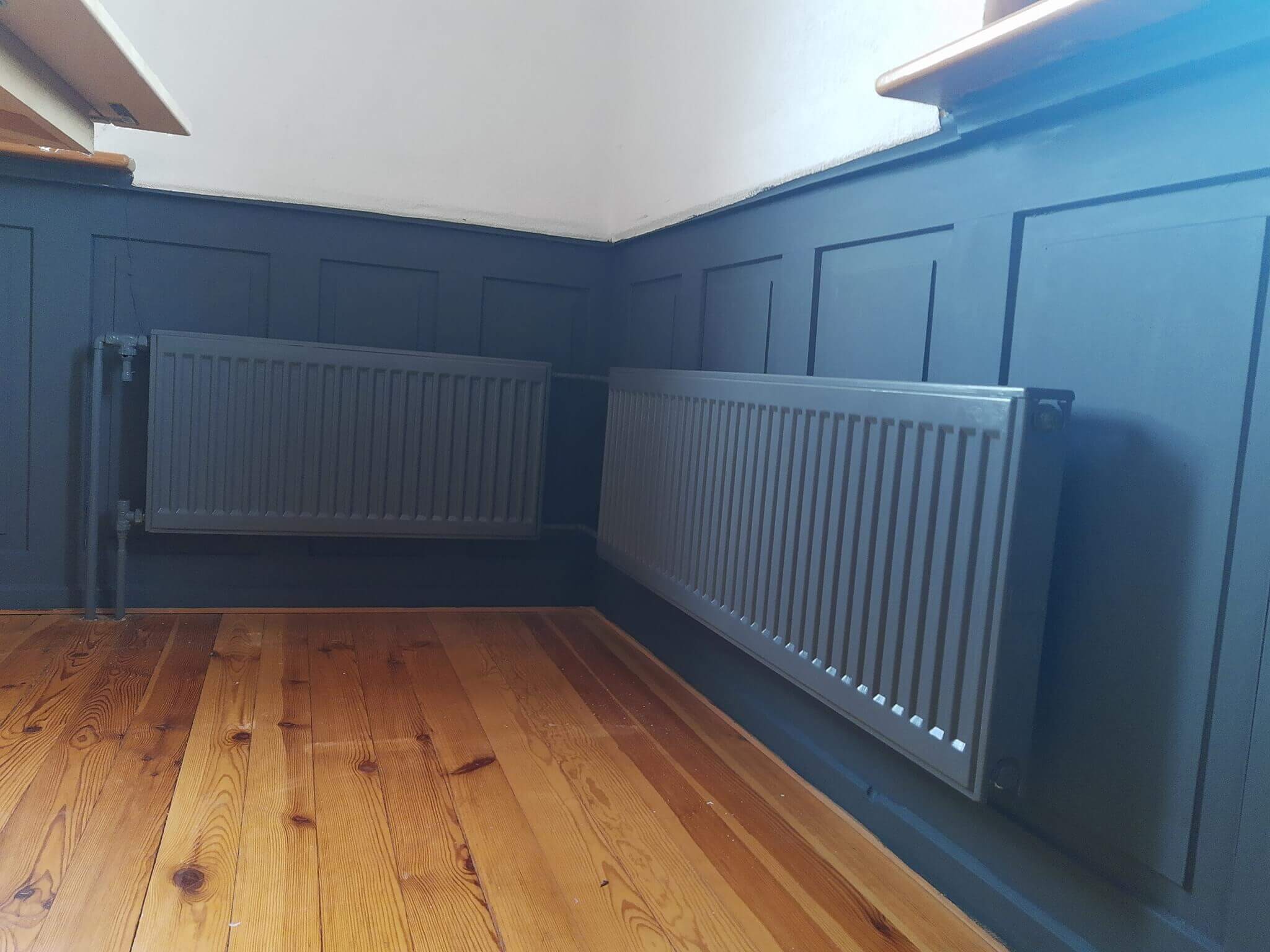
After
- Painted, the radiators now disappear discreetly into the wall.
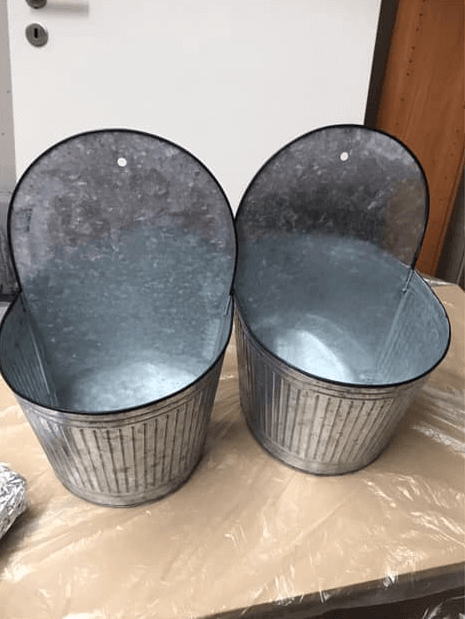
Before
- These flower pots should be given an individual look.
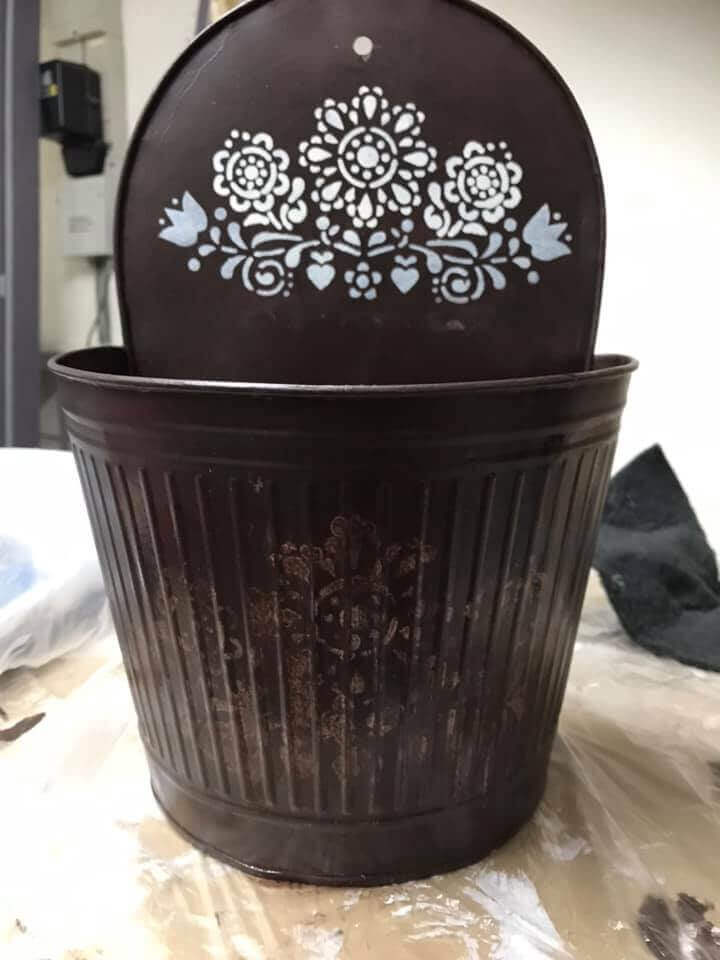
After
- Stencilled with brown and white. A unique specimen!
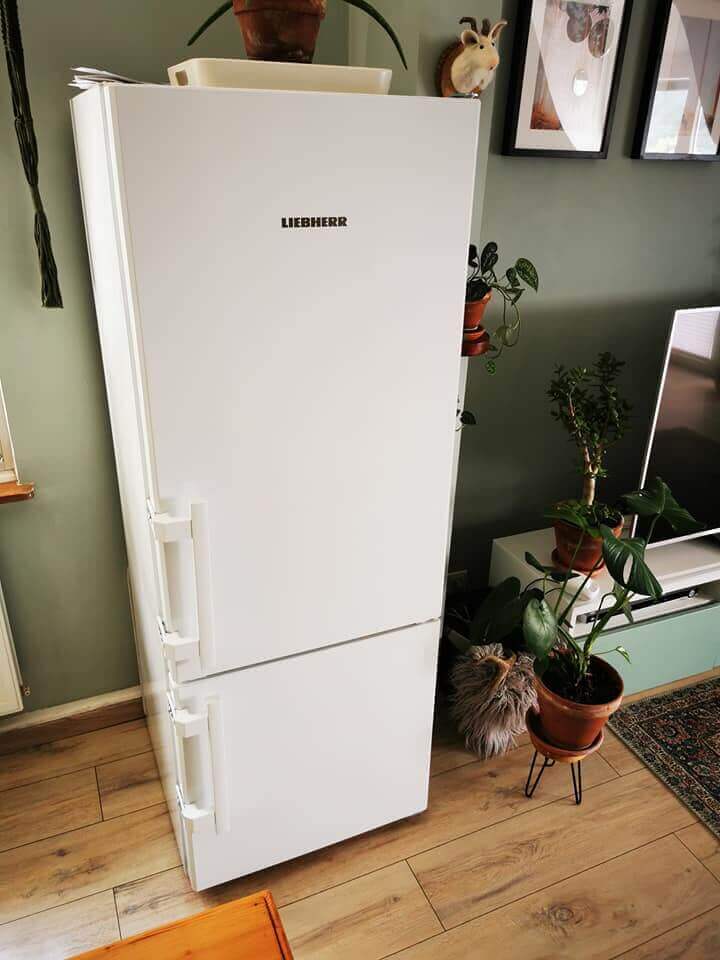
Before
- There was no room for the classic white goods in this beautiful kitchen. The refrigerator should be adapted.
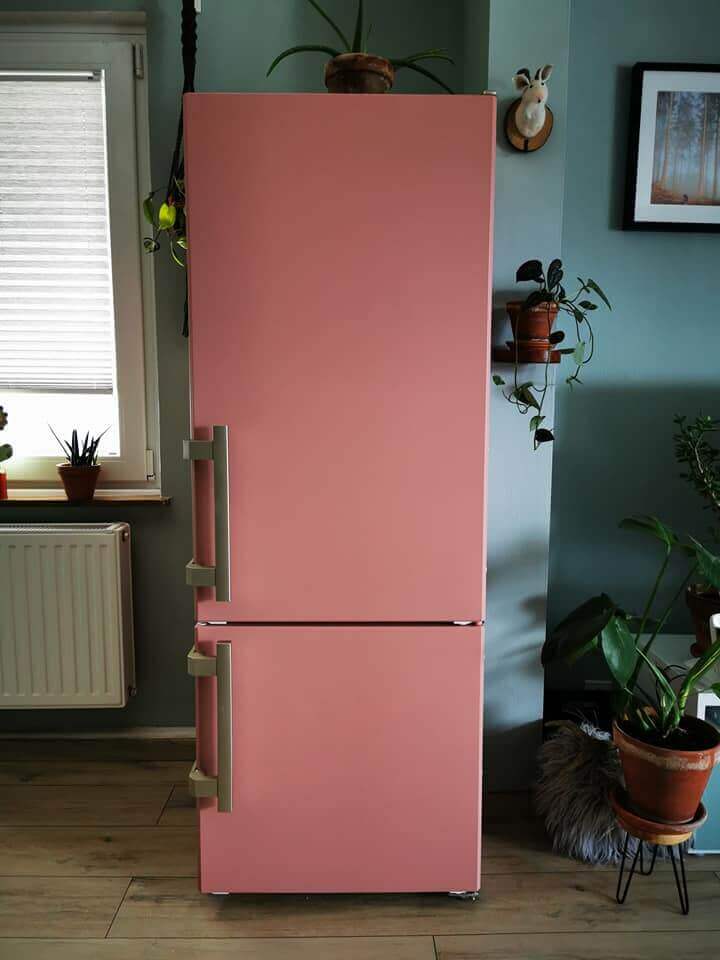
After
- Now it's a real eye-catcher! Painted, the fridge becomes a design object.
Preparation: How to choose the right colour for your project
Which metal do you want to paint?
Basically, you can simply paint over the base coat of any metal that has already been painted with a metal lacquer. For raw surfaces, it is always a good idea to prime with To Block - MissPompadour Stainblock to prevent rust from forming. Iron, steel, stainless steel and sheet metal are uncomplicated. All you need to do here is clean thoroughly and, if necessary, sand off tarnished or rusty areas well and then apply the primer. Our metal primers also act as corrosion protection.
No paint will really last on chrome-plated surfaces. The same applies to anodised aluminium.
Pro Tip: Anodised means that the metal is coated with a protective layer that makes it much more robust. The best thing to do is to take a coin and scratch the surface. If there are scratches - no problem, you can paint. But if there are no scratches, the aluminium is anodised and therefore unfortunately not paintable. Unfortunately, no varnish will adhere to the protective layer
You can easily paint copper with our varnishes. If there is already corrosion or verdigris, it is best to sand it off thoroughly. Don't forget to wear a mouth guard!
Galvanised sheet metal should not be freshly galvanised. Older galvanised metals can be painted normally.
Are you interested in our metal varnishes? Then take a look at our page on metal substrates!
What effect do you want to achieve?
You are spoilt for choice, because each of our varnishes is suitable for metal. If you want an easy-care, robust surface, then MissPompadour Eggshell Varnish is the right choice for you. For a matt finish, choose MissPompadour Matt Varnish.
Where do you want to paint?
Whether indoors or outdoors, metals are usually easy to paint. We have already described which varnish you need for interior painting. MissPompadour Eggshell Varnishes are also ideal for garage doors, letterboxes, fences and the like. Take a look at our blog on painting garden furniture.
Painting metal professionally: Instructions by MissPompadour
Step 1: Choose a varnish
Choose a colour shade that you like. All our varnishes are very suitable for painting metal.
Tip: As we have many colour shades to choose from, just order our colour cards in advance to be sure to find the perfect colour.
Step 2: Prepare the surface
If the old varnish is still intact, you can paint without sanding. However, if there are damaged areas and flakes, you should first sand them smooth or sand them off. Loose rust must also be completely sanded away. However, it is not necessary to apply an initial coat of rust protection varnish. If you want to remove the old varnish completely, you can simply sand it off. If you have any holes, simply fill them with To Fill - MissPompadour Filler.
Step 3: Clean the metal parts
Use To Clean - MissPompadour Cleaner and lukewarm water to ensure that the surface is completely free of dust and grease. Afterwards, wash well with clear water so that there is no residue of the cleaner left. This also applies to all other cleaners.
Step 4: Prime the surfaces
Prime raw metal or sanded areas with To Block - MissPompadour Stainblock. This is the only way to make sure that no rust can form under your fresh protective paint.
An additional metal protection paint is not needed here. After priming, wait 4 - 5 hours or overnight.
Step 5: Paint
Now apply the layers of paint. Apply as many coats as you like until you are satisfied with the result. Often 2 coats are enough for a perfectly opaque result. Let each coat dry very well. On average, the next coat can be applied after 4 - 5 hours, but depending on the environmental conditions, it may take longer until the paint is sufficiently dry to the touch. Ensure good air exchange and medium temperatures so that the paint can cure well. The surfaces will become more stable from day to day and will have reached a very good stability after 10 - 14 days.
Step 6: Seal the varnish
Finally, seal the varnish with the To Seal - MissPompadour Topcoat if you expect a heavy load. With this you are on the safe side. Especially with the matt varnish qualities, a protective coat creates a robust surface. Please note that To Seal is only suitable for interior use.
FAQ: Frequently asked questions
1. Before Painting
Which colour is suitable for metal?
Each of our stable varnishes is suitable for different metals. We especially recommend our MissPompadour Eggshell Varnish. With it you can create a long-lasting and hard-wearing surface with a satin sheen.
Do I need a primer?
You should always prime when painting raw metal. MissPompadour To Block is just the right product for this. Because even if you have sanded off rust spots and chipped varnish, you ensure that no new rust forms. This way you have the same protection as with a rust-protective paint, but the full choice of colours.
Which brushes are suitable for painting metal?
Our fine MissPompadour brushes are great for painting all corners, edges and hard to reach areas. If you have larger, flat areas to paint, you can also paint them beautifully with the varnish roller for water-based varnishes.
How do I deal with rust?
Rust should always be sanded off as well as possible so that it does not continue to wax and then crack the varnish. Then prime with MissPompadour To Block to prevent rust from forming again.
Can painted metal be painted over?
Yes, you can simply paint over old rustproof paints as long as they do not flake off. You can also sand them lightly before painting so that the metal paint adheres better.
2. To Paint
How often do you have to paint metal?
As a rule, you can achieve an opaque result with our varnishes with just two coats. Depending on the substrate, varnish colour and painting technique, more may be necessary.
Do I need a sealant?
Whether a sealant is needed always depends on how heavily the painted surfaces are loaded. A metal railing and handrail, for example, can be exposed to a great deal of stress. Decorative objects, on the other hand, usually do not need a sealant. You can make all heavily stressed surfaces even more robust with MissPompadour To Seal. Especially the matt qualities gain in resilience.
How do I paint a radiator?
For radiators, all the hints and tips above apply. For example, you can paint the radiator with the same shade of MissPompadour Matt Varnish as you paint the wall behind it. That way it simply disappears into the wall. Take a look at our blog on painting radiators.
These are the accessories you need for metal painting
These are the other materials you need to paint metal objects:
- Sandpaper or sanding pad: For all areas where old varnish has flaked off or rust has formed. These should be sanded first.
- Cleaning cloth and bucket to thoroughly clean your workpiece first: The surface must be free of dust and grease for your paint to hold well.
- Masking tape: Always remove the masking tape when the paint is still wet, so you get a clean edge.
- plastic drop cloth or newspaper: To protect the parts that are not to be painted
- Brush , varnish roller and paint tray: Use the brush to paint corners and edges and hard-to-reach areas, and the varnish roller to paint larger areas.
Finished reading yet?
Here you will find more exciting topics
Your new favourite colour
For your perfect project
Content: 91 piece (€0.14* / 1 piece)

